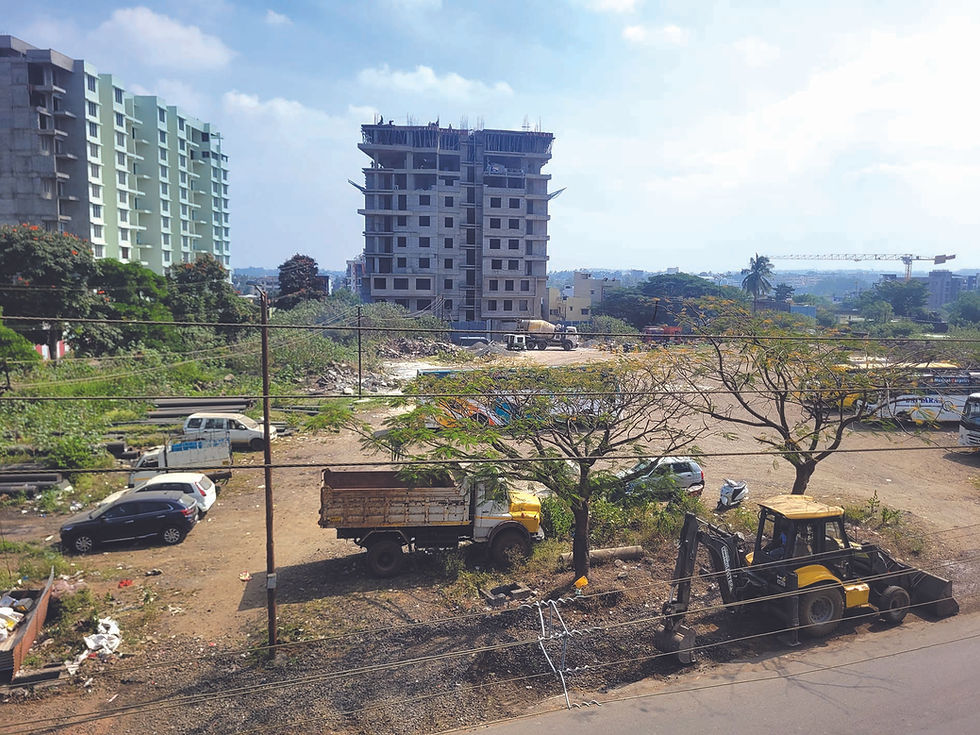Kolhapur searches for new municipal HQ
- Rajendra Joshi

- 2h
- 2 min read
Corporation, which tables a Rs 1,000-crore budget, has wandered for 50 years without owning its building

Kolhapur: When those in power treat public land casually—when governments and administrators shrug off responsibility—the loss inflicted on society is permanent. Public facilities shrink, generations suffer, and land sharks waiting in the shadows walk away laughing. Kolhapur is witnessing exactly such a tragedy today.
For years, a nexus of civic officials, political handlers and land mafia has systematically wiped out public-use spaces belonging to the Kolhapur Municipal Corporation (KMC). But what is unfolding now is even more shameful: the corporation that has completed its Golden Jubilee cannot even protect land meant for its own headquarters.
Recently, KMC quietly shelved its proposal to construct the new corporation building on its prime Rs 40-crore plot at Nirman Chowk, and instead expressed intentions to shift to a five-acre government plot at Shenda Park. But with that Shenda Park land already tied up in a court dispute, the so-called new headquarters appears to be nothing more than a daydream—an announcement designed to fool citizens.
Founded in 1972, the Kolhapur Municipal Corporation has failed for half a century to build its own headquarters on its own land—across a city spread over 66.82 sq km.
Like a scorpion forced to change its burrow repeatedly, the corporation has shifted sites and performed two ground-breaking ceremonies so far:
Nagla Park near Khanwilkar bungalow — first proposed.
Tarabai Park, in land beyond municipal holding limits — a second bhoomipujan 23 years ago.
The result? Due to utter negligence, the land slipped back to original owners. A commercial complex now stands there.
Later, the KMC identified 9 acres 36 gunthas (Survey Nos. 714, 786 / City Survey 255, 256) at Nirman Chowk, previously a garbage dumping site. Architects were invited. Designs were completed. And then? Ten years of paralysis. In the meantime, encroachment mafia moved in, land ownership was challenged in courts and—thanks to government inaction—the prime civic property is slipping away again.
Shenda Park shift
Now, Administrator K. Lakshmi has announced the decision to build the headquarters at Shenda Park. Citizens may celebrate temporarily, but a burning question remains:
Is the relocation for the corporation’s convenience—or for someone else’s profit?
Powerful developers and wealthy investors have their eyes on the Nirman Chowk land. Word on the street suggests deals are already underway. If true, the relocation is not an administrative decision—it’s a sellout.
Kolhapur’s public land has become a banquet table, and mafias have developed a taste for tearing chunks out of it—with blessings from influential power centres.
Kolhapur’s citizens must raise their voices now—before yet another public asset becomes private wealth.
If they do not stop this naked plunder, the coming generations will curse today’s silence.
The question remains: Does anyone have the courage to wake up the Kolhapur Municipal Corporation—before its land and dignity are looted completely?





Comments